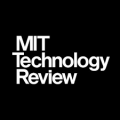
Floods killed at least two dozen people as Hurricane Ida swept through New York, New Jersey, and Pennsylvania on the night of September 1. This devastation is on top of the 13 who died and the million who lost power when the storm hit Louisiana, Mississippi, and Alabama last weekend.
As the storm moved up the East Coast, New York City was hit particularly hard. Over three inches of rain fell in Central Park within an hour, breaking a record set just over a week before. Floodwaters turned parkways into canals and subway steps into waterfalls, leaving residents stranded or trapped. This despite billions of dollars the city has spent to improve its flood defenses since Hurricane Sandy in 2012.
Extreme storms are now becoming more common as climate change makes rainfall more severe, and storms will get worse with further warming. There’s still a lot that cities need to figure out to prepare for the resulting threats, which can range from flash floods to storm surges. Adapting will take time and money—decades in some cases, and hundreds of billions of dollars. But climate change and adaptation efforts are running at different speeds, writes Casey Crownhart for the MIT Technology Review.
Read the full article at: https://www.technologyreview.com/2021/09/03/1034315/ida-dodged-nyc-flood-defenses-climate-change-storm/
Image credits: Getty






